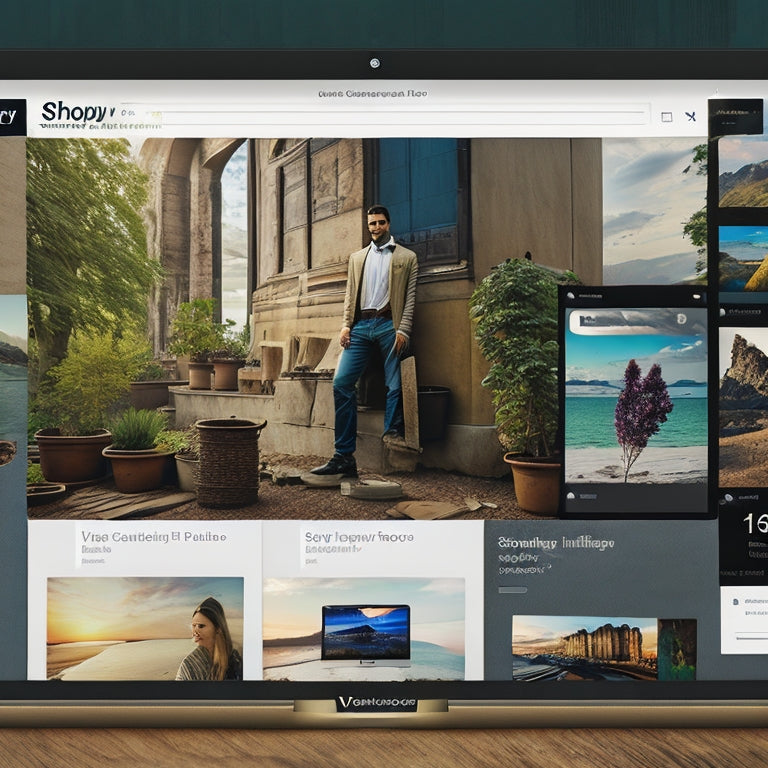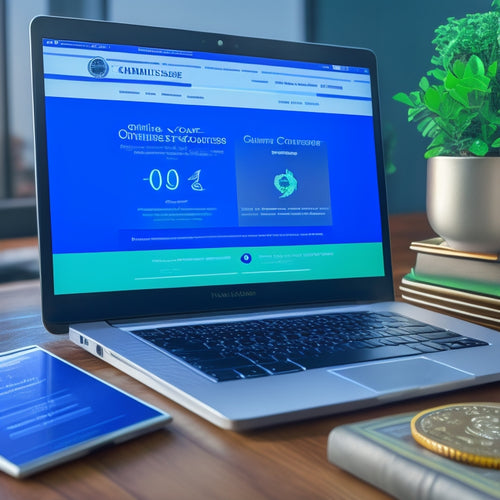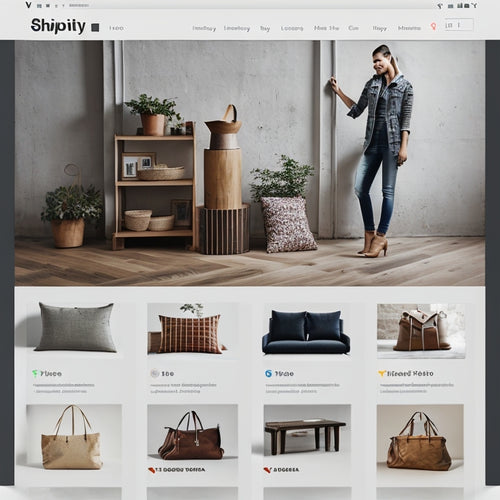
Optimizing Your Blog With Shopify: Best Practices and Guidelines
Share
This article explores best practices and guidelines for optimizing a blog on the Shopify platform. It aims to provide objective and data-driven insights for online store owners seeking to enhance their blogging efforts.
The benefits of blogging on Shopify are discussed, along with tips for optimizing blog posts and managing visibility.
Additionally, the article offers helpful tutorials and showcases successful Shopify blog examples to inspire readers.
By following these guidelines, online store owners can effectively leverage the Shopify platform to improve search engine traffic and engage their target audiences.
- Shopify is a suitable choice for content-heavy websites, while WordPress is better for ecommerce websites with content as a secondary source of income.
- Blogging on Shopify can benefit most Shopify stores, especially startups with limited advertising budgets.
- Building a content strategy based on goals and using content clusters can help organize and prioritize blog post ideas.
- Good content quality, compelling headlines, visuals, and internal and external linking are key practices for optimizing a blog on Shopify.
Benefits of Blogging on Shopify for Online Stores
This discussion focuses on the benefits of blogging on Shopify for online stores. Specifically, it explores the advantages in relation to increased website traffic, enhanced customer engagement, improved SEO rankings, boosted brand visibility, and higher conversion rates.
By leveraging the blogging platform on Shopify, online stores have the potential to drive more traffic to their websites. This is achieved by creating valuable and relevant content that attracts and retains visitors. Additionally, blogging allows online stores to engage customers through informative and entertaining posts. By providing valuable content, online stores can establish themselves as authorities in their industry and build trust with their audience.
Furthermore, blogging on Shopify can improve SEO rankings. Search engines value fresh and high-quality content, and regularly updating a blog can signal to search engines that the website is active and relevant. This can lead to higher rankings in search engine results, making it easier for potential customers to find the online store.
In addition to increased website traffic and improved SEO rankings, blogging on Shopify can also boost brand visibility. By consistently publishing content that aligns with the brand's values and target audience, online stores can increase their visibility and reach a wider audience. This can help to establish the brand as a reputable and trustworthy option in the market.
Finally, blogging on Shopify can lead to higher conversion rates. By providing valuable content and engaging with customers, online stores can build a relationship with their audience. This can increase the likelihood of visitors becoming customers, as they are more likely to trust and choose a brand that consistently provides value and engages with them.
Increased Website Traffic
To increase website traffic, incorporating search engine optimization techniques and promoting blog posts through social media channels can effectively attract more visitors to your Shopify blog.
Optimizing blog content is crucial for increasing blog traffic. By conducting keyword research and strategically incorporating relevant keywords into your blog posts, you can improve your search engine rankings and attract organic traffic. Additionally, optimizing your blog content involves creating high-quality, informative, and engaging posts that provide value to your audience. This can help increase user engagement and encourage visitors to spend more time on your blog, leading to higher traffic.
Promoting your blog posts through social media channels such as Facebook, Twitter, and Instagram can also help drive traffic to your Shopify blog. By sharing compelling snippets and visuals from your blog posts, you can pique the interest of your social media followers and encourage them to visit your blog for more information.
Overall, a combination of search engine optimization techniques and social media promotion can effectively increase website traffic to your Shopify blog.
Enhanced Customer Engagement
Enhanced customer engagement can be achieved by implementing interactive features and incorporating user-generated content on the Shopify blog. Measuring engagement is crucial for understanding the effectiveness of these strategies.
Interactive features such as quizzes, polls, and surveys encourage active participation from customers, providing valuable insights and creating a sense of involvement. User-generated content, such as reviews, testimonials, and customer stories, not only increases engagement but also builds trust and credibility.
Strategies for interactive content include creating personalized experiences, leveraging social media integration, and encouraging user-generated content through contests or challenges. By incorporating these strategies, Shopify blogs can foster a sense of community, encourage customer interaction, and ultimately drive customer loyalty and conversion.
To measure engagement, metrics such as click-through rates, time spent on page, social shares, and comments can be analyzed to determine the effectiveness of interactive features and user-generated content in engaging customers.
Improved SEO Rankings
Improved SEO rankings can be achieved by implementing effective keyword research and optimization strategies on the Shopify blog.
By conducting improved keyword research, you can identify high-volume, low-competition keywords that are relevant to your target audience. This will allow you to optimize your blog posts and increase your chances of ranking higher in search engine results pages.
Additionally, utilizing content promotion techniques such as social media sharing, influencer collaborations, and guest blogging can help increase the visibility and reach of your blog content. These strategies can attract more organic traffic to your blog and improve your overall SEO rankings.
It is important to consistently monitor and analyze the performance of your blog posts using analytics tools to identify areas for improvement and refine your strategies for better results.
Boosted Brand Visibility
Boosted brand visibility can be achieved by effectively leveraging social media platforms and implementing targeted marketing strategies.
In today's digital landscape, social media has become a powerful tool for increasing brand recognition and reaching a wider audience. By utilizing platforms such as Facebook, Instagram, Twitter, and LinkedIn, businesses can engage with their target market, build a loyal following, and establish themselves as industry leaders.
Additionally, implementing effective content marketing strategies can further enhance brand visibility. By creating and sharing valuable content that resonates with their audience, businesses can not only increase their brand recognition but also position themselves as trusted sources of information. This approach not only attracts new customers but also fosters loyalty among existing ones.
Overall, implementing these strategies can lead to increased brand recognition and a stronger presence in the market.
Higher Conversion Rates
Higher conversion rates can be achieved by strategically optimizing the user experience and implementing effective call-to-action strategies. Conversion rate optimization (CRO) is a data-driven approach that aims to improve the percentage of website visitors who take desired actions, such as making a purchase or filling out a form.
When it comes to blog monetization strategies, CRO plays a crucial role in maximizing the revenue potential of a blog. By analyzing user behavior, conducting A/B tests, and making data-informed changes, bloggers can optimize their blog layout, content, and CTAs to increase conversions.
This may include optimizing the placement and design of CTAs, improving page load times, simplifying the checkout process, and personalizing the user experience. Implementing effective CRO techniques can significantly impact the success of a blog's monetization strategy and drive higher conversion rates.
Tips for Optimizing Your Shopify Blog
This discussion will focus on optimizing a Shopify blog through SEO best practices, content organization strategies, blog post visibility, and utilizing visuals effectively.
By implementing SEO best practices, such as incorporating target keywords, optimizing meta descriptions, and utilizing subheadings, Shopify bloggers can improve their search engine rankings and attract more organic traffic.
Additionally, organizing blog content through content clusters and internal linking can enhance the user experience and improve search engine understanding of page relationships.
SEO Best Practices
Implementing proper SEO techniques is crucial for optimizing your Shopify blog and improving its visibility in search engine rankings.
To optimize your blog for SEO, it is important to employ effective SEO optimization techniques and keyword research strategies. Start by conducting thorough keyword research to identify relevant and high-ranking keywords for your blog posts. Incorporate these keywords strategically throughout your content, including in the page title, meta description, subheadings, and body text.
Additionally, optimize your blog posts by using internal and external links to enhance the credibility and importance of your content. Aim to include three to five internal links per 1,000 words and link to relevant and trusted external sources.
Content Organization Strategies
Content organization strategies play a crucial role in structuring and prioritizing blog post ideas for effective communication and engagement with target audiences.
One such strategy is content clustering, which involves grouping related blog posts around a central pillar content. This pillar content serves as the primary hub for the content cluster and provides comprehensive information on a specific topic.
By organizing blog posts in this way, it becomes easier for readers to navigate and explore related topics, enhancing their overall experience and understanding.
Additionally, the pillar content strategy helps search engines recognize the interconnectivity of the blog posts, improving SEO and visibility.
Implementing content clustering and the pillar content strategy can lead to increased user engagement, improved search engine rankings, and a more organized and cohesive blog.
Blog Post Visibility
In order to optimize the performance of your blog on Shopify, it is important to consider blog post visibility. After organizing your content effectively, you need to promote your blog posts to maximize their reach and impact.
Blog post promotion involves various strategies such as sharing on social media platforms, email marketing, and collaborating with influencers or other bloggers. By actively promoting your blog posts, you can increase their visibility and attract more traffic to your website.
In addition to promoting your blog posts, it is crucial to measure their performance to evaluate the effectiveness of your efforts. This can be done by analyzing metrics such as website traffic, engagement rates, and conversions.
Utilizing Visuals Effectively
Utilizing visuals effectively in a blog can enhance the overall quality of the content and improve engagement with readers. Visuals, such as images, infographics, and videos, play a crucial role in capturing the attention of the audience and conveying information in a concise and engaging manner.
Incorporating infographics can help simplify complex concepts and data, making them more digestible for readers. Videos, on the other hand, provide a dynamic and interactive experience, allowing readers to actively engage with the content.
By using these visual elements, bloggers can effectively communicate their message, increase reader comprehension, and promote a more immersive and enjoyable reading experience.
Furthermore, incorporating visuals into blog posts has been shown to increase social media shares and overall engagement, leading to improved visibility and reach for the blog.
Therefore, it is essential for bloggers to consider using infographics and incorporating videos to optimize their blog content and enhance reader engagement.
Helpful Tutorials for Shopify Blog Optimization
One effective way to optimize a Shopify blog is by following helpful tutorials that provide guidance on blog optimization strategies. These tutorials offer valuable insights and techniques to improve the readability and optimize keywords in your blog posts.
By implementing the strategies recommended in these tutorials, you can enhance the overall quality of your content and increase its visibility to your target audience.
Improving readability involves using clear and concise language, organizing your content with subheadings, and incorporating visuals to enhance understanding.
Optimizing keywords requires conducting thorough keyword research, strategically placing keywords throughout your content, and using relevant internal and external links.
Learn More: Shopify Blogging Platform and Features
The features and functionality of the Shopify blogging platform are important to consider when deciding whether to use it for your online store.
Shopify offers a range of shopify blog themes and blog customization options that allow users to create a unique and visually appealing blog design.
The platform provides a user-friendly interface for managing blog posts, allowing for easy creation, editing, and scheduling of content.
Additionally, Shopify offers various customization options, including the ability to add images, videos, and product listings within blog posts. This enhances the overall visual appeal and engagement of the blog.
With these features, Shopify provides a flexible and innovative platform for businesses to effectively showcase their products and engage with their audience through blogging.
Frequently Asked Questions
How Can I Optimize My Shopify Blog for Search Engine Visibility?
Improving blog performance and enhancing blog content on Shopify can optimize search engine visibility. Incorporate target keywords in page titles and meta descriptions, use subheadings and internal/external links for SEO, and regularly analyze metrics for refinement.
What Are Some Effective Strategies for Increasing Engagement on My Shopify Blog?
Effective strategies for increasing engagement on a Shopify blog include creating high-quality content that resonates with the target audience, encouraging community participation through comments and social sharing, and leveraging data-driven insights to optimize content and improve user experience.
Are There Any Specific Design Considerations for a Shopify Blog?
Responsive design and customization options are important considerations for a Shopify blog. Responsive design ensures optimal user experience across devices, while customization options allow for unique branding and design elements.
What Are the Best Practices for Organizing and Categorizing Blog Posts on Shopify?
Organizing and categorizing blog posts on Shopify involves creating a coherent structure and using tags or categories to group related content. This helps improve navigation, user experience, and SEO optimization, making it easier for readers to find relevant information.
Can I Integrate My Shopify Blog With My Social Media Accounts for Increased Reach and Visibility?
Integrating social media accounts with a Shopify blog can maximize reach and visibility. By promoting blog posts on platforms such as Facebook, Twitter, and Instagram, businesses can increase their online presence and engage with a wider audience.
Related Posts
-

3 Best Online Course Monetization Strategies for Beginners
You're looking to monetize your online course, but where do you start? Begin by selling digital products that solve a...
-

Bulk Editing Product Images: The Easy Way to Enhance Your Shopify Store
The process of enhancing an online store's appearance through bulk editing of product images is a valuable feature o...
-

How Do I Improve My Shopify Store Design
This article aims to provide informative and knowledgeable insights into improving the design of a Shopify store. By...


